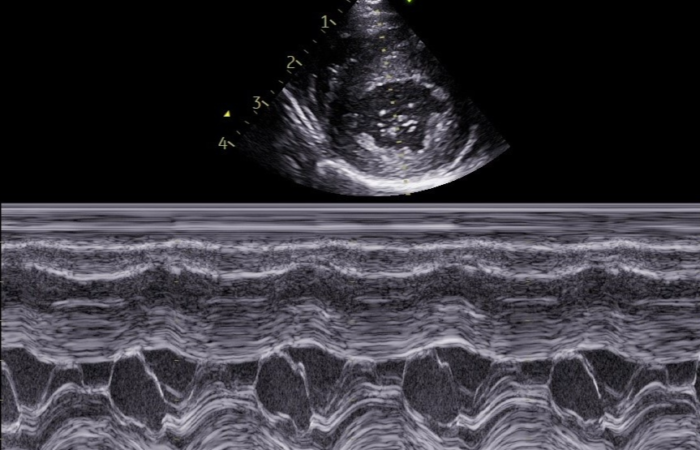Heart in focus: Basic echocardiography in dogs and cats
This veterinary thought exchange online tutored course is aimed at veterinarians in practice that have little to no experience of echocardiography.
In this 9-week course we will cover everything from acquisition of an echocardiographic examination through to interpretation of more common disease processes that can be diagnosed from right-sided views. We will cover Doppler echocardiography briefly, but otherwise focus will be on both B and M-mode. Diseases covered will include acquired heart disease in the cat and dog. Congenital heart disease will not be discussed as this requires more advanced understanding of Doppler and is beyond the scope of this particular course.
The course is run by our very own Liz Bode (EBVS and RCVS Recognised Specialist in Small Animal Cardiology). It runs over a nine-week period and takes around 9 hours to complete. The course is delivered via video webinars and supplemented with a real-time discussion forum, giving you the opportunity to ask questions or discuss cases you may be facing in your practice.
(Access to this course is for 12 months from the start of the course going live on our website. The discussion forum will be monitored for the course duration only).
This program has been RACE approved for 9 hours of continuing education credit in jurisdictions that recognize RACE approval – Click the logo to verify:
Course Content
- Describe how ultrasound waves are generated.
- Choose the correct probe and settings for your echocardiography examinations.
- Describe patient preparation.
- Summarise the different ways that echo images can be optimised through use of your machine’s buttons and dials.
- Review gross cardiac anatomy.
- Explain important concepts of cardiovascular physiology including terms such as afterload and preload, the cardiac cycle, systolic function and wall stress.
- Name certain conditions that we might see in cats and dogs and how they relate to these concepts.
- List the different types of Doppler echocardiography.
- Recall when to use the different types of Doppler echocardiography.
- Calculate basic pressure gradients between chambers in the heart.
- List the standard views of the right-sided examination.
- Understand how we obtain these images.
- Describe what we can see on each of the views discussed.
- Describe what measurements we use to answer specific questions.
- Explain how we obtain certain measurements.
- Determine what is normal and what isn’t based on these measurements.
- Determine from your echocardiography examination when a dog has MMVD.
- Determine from your echocardiography examination when a dog has DCM.
- Outline the diagnostic approach to these cases from the echocardiography examination to recommending further tests.
- Demonstrate your ability to diagnose pericardial disease and know when to treat it.
- Identify cardiac tamponade.
- Describe how to perform effective pericardiocentesis and further diagnostic tests associated with pericardial disease.
- Review criteria for the diagnosis of endocarditis.
- Outline changes on echocardiography that might be associated with pulmonary hypertension.
- Categorise feline heart disease based on its echocardiographic appearance.
- Determine when a cat requires treatment for heart disease.
- Assimilation of learning with a case based approach.
Meet the speakers

Liz Bode
Director, Cardiology Specialist
already purchased this course? login to your vtx account for access
login


